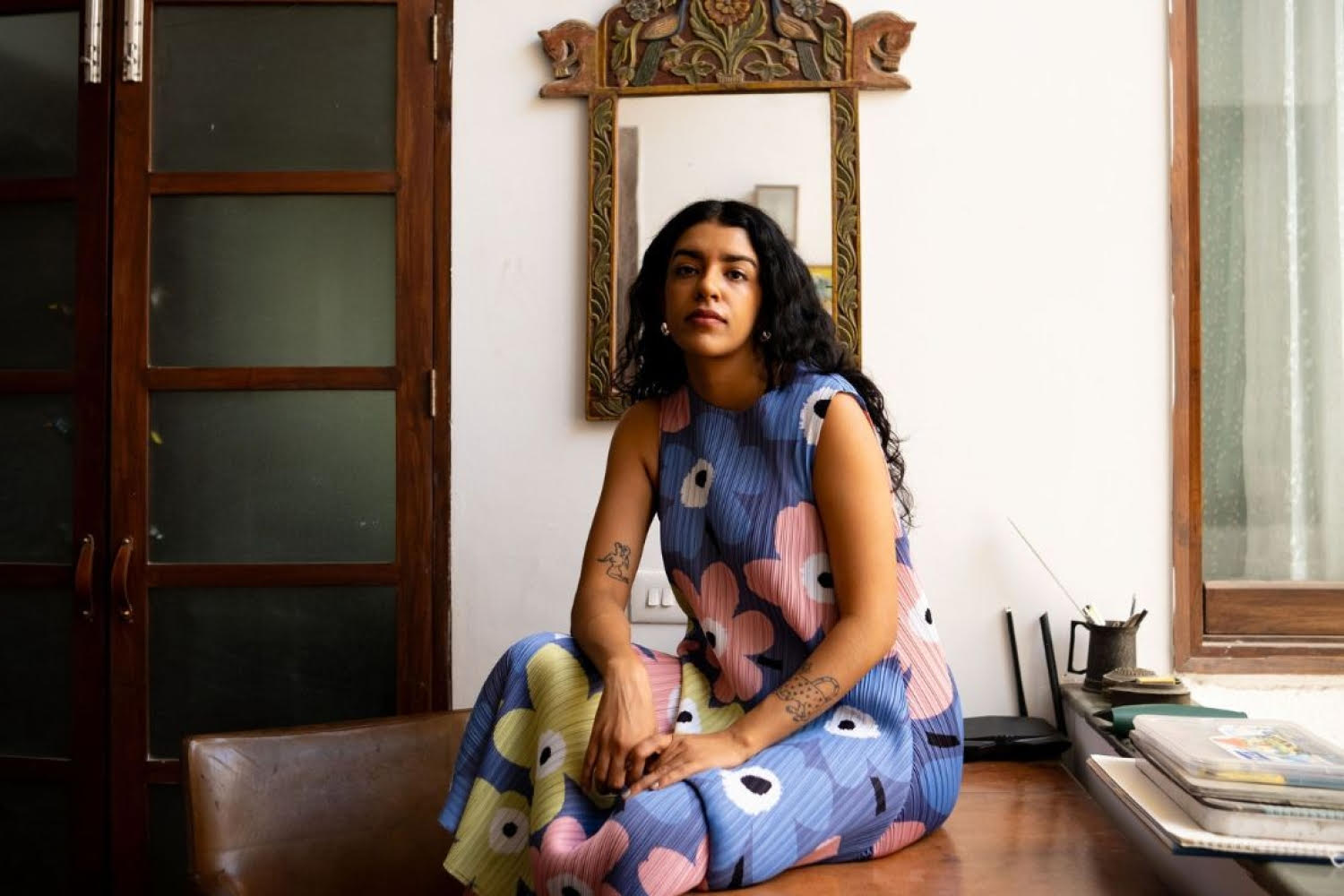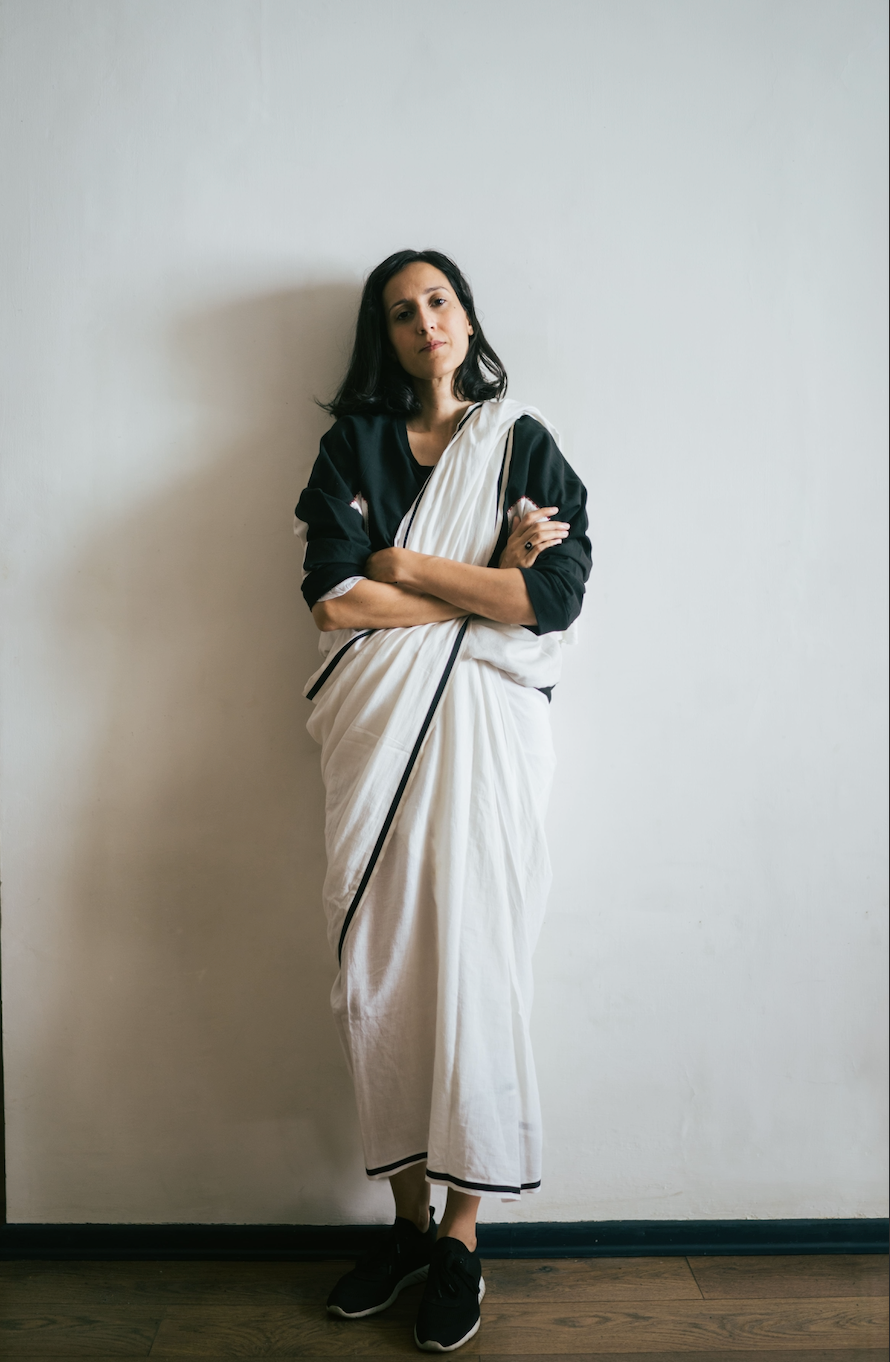Articles

The Fantastical Worlds of Tarini Sethi
Interviewed by Gariyashi Bhuyan
Art, for Tarini Sethi, has always been a tool for provocation and inquiry. A heady mix of bold and bizarre, the New Delhi-based artist delves into themes of human intimacy, body-consciousness and sexuality with unflinching depth. One of India’s most prolific contemporary voices, her work draws from folklore and mythology through a multimedia practice encompassing paintings, drawings, and metal sculptures.
In a candid conversation, we discuss the uncertainties of life as an artist, the challenges of being a woman in India, career-defining moments, and beyond.
Tell us a little bit about your journey in art so far.
Being an artist means you never really know what you will be doing in a month or how you will be paying your bills. I thrive off of this uncertainty. I've been creating ever since I can remember. I’ve always loved the weird, the bizarre, and the beautiful, all mixed into one. I think it's hard to talk about my journey because there's just so much more to learn and do, and I genuinely feel that I've only just started.
How has your identity as an Indian and South Asian woman shaped the lens through which you view themes like gender politics, body consciousness, and sexuality?
Being a woman in India is an expansive and ever-evolving experience, so unique to us that it can be hard to explain to anyone on the outside. It is terrifying because we don't have any body autonomy. We have no control over our rights or the skin we inhabit. Our country once produced treasures like the Kamasutra and Khajuraho, and yet, sex and nudity are such taboo subjects. With my art, I try to take a maximalist approach and make these topics as ‘in your face’ as possible so there’s no hiding from them!”We have no control over our rights or the skin we inhabit. Our country once produced treasures like the Kamasutra and Khajuraho, and yet, sex and nudity are such taboo subjects. With my art, I try to take a maximalist approach and make these topics as ‘in your face’ as possible so there’s no hiding from them
Tarini’s body of work is refreshingly diverse — she has crafted evocative and intricate dreamscapes featuring multi-limbed anthropomorphic figures through paintings, drawings, stainless steel sculptures, and light-and-shadow installations made with wooden puppets. In her imagined utopia, bodies are free from the conventional notions of gender, perfection, and beauty. She draws inspiration from a range of indigenous artistic practices from the Indian subcontinent, specifically Kalighat, Miniature, Kavad and Tholu Bommalata.
Was there a defining moment or experience that propelled you towards using your art as a tool for critique and world-building?
I remember years ago, I spoke to a gallerist about my “future” and she told me that no one would want to hang my work on their living room walls because it’s overtly sexual. I decided to take that lazy critique and use it to push myself to create more work around what I want to see on the walls of galleries and living rooms.
Folklore and mythology are central to your narratives. Do you feel these stories carry universal appeal, or are they uniquely South Asian in the way they engage with identity, politics, and emotion?
My art talks a lot about world-building and futurism, which is created in direct response to the political, social and ecological anxieties of today — challenges that most countries in the world face right now. These are paradigm-shifting times, of war and mistrust, of division and hate. I think my work is extremely universal and talks about a future where there is harmony and balance between us.
Tarini, 34, has showcased her work at Chemould Prescott Road in Mumbai, Art Basel in Hong Kong, Trimarchi in Argentina, Rajiv Menon Contemporary in Los Angeles and Galerie Geek/Art in Tokyo. Tarini is also a curator, championing emerging artists across South Asia through The Irregulars Art Fair and its periodical, The Irregular Times.
How do the materials you work with such as metal, paint, or other media carry cultural or symbolic meaning (within a South Asian framework)?
Metal is such a commonplace, everyday material in India, Our railings, windows, and automobiles are all made of it. We are the second largest producers of steel and aluminium in the world. My goal is to take this mundane and familiar material and turn it into something beautiful. I strongly believe that anything that is primarily of utilitarian value can also be viewed and enjoyed for simply what they are.
A career retrospective: What are some moves or projects you’re most proud of? Are there any choices you’d like to revisit or approach differently?
The first ten years of my career were mostly creating every day from the confines of my bedroom, saying yes to every opportunity that came my way, no matter how big or small. I believed that my hard work and hustle would eventually pay off. Even though these last two years have been the most significant, I wouldn't have gotten here without the many sleepless nights put in in the initial years. I'm extremely proud of everything I've created, even though I sometimes look back at older works through critical lenses. I'm particularly proud of The Irregulars Art Fair and The Irregular Times which I co-founded to give South Asian artists a platform to showcase their work.
What’s next for you — both as an artist and as an individual?
So much! I constantly feel like I need to push myself to be better — create bigger and wilder work. My future is all about experimentation and play. I want to be able to look back at 2025 and know that I've learned new things and produced what I love.
Tarini’s artistic world is anything but familiar. It is a fantastical realm where goddess-like nude female figures embody complexity and liberation. What makes her work truly extraordinary is its balance: abstract and contemporary enough to captivate a global audience, yet deeply anchored in an Indian sensibility that I, as a woman born and raised here, feel viscerally. Hers is an artistic journey so intentionally open-ended and malleable that Tarini defies the confines of restrictive definitions — a sentiment I wholeheartedly share.


